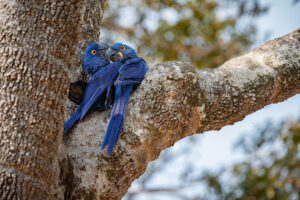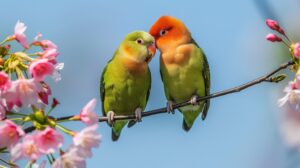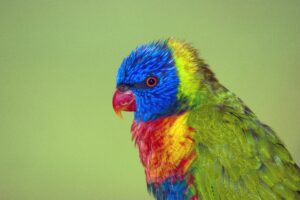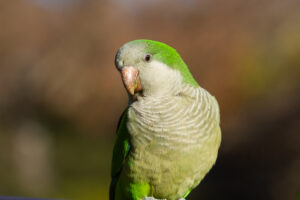Introduction
The Hahn’s Macaw is one of the most captivating companion birds available to avian enthusiasts today. As a smaller member of the macaw family, the Hahn’s Macaw combines the vibrant personality of larger macaws with a more manageable size, making them increasingly popular pets across the United States. However, many first-time owners make critical mistakes when bringing these intelligent birds into their homes, leading to challenges for both the bird and caretaker.
If you’re considering adding a Hahn’s Macaw to your family or already own one of these charming birds, understanding proper Hahn’s Macaw care is essential for fostering a happy, healthy relationship with your feathered companion. These birds can live for decades when properly cared for, making your commitment to responsible ownership particularly important.
In this comprehensive guide, we’ll explore the five most common mistakes people make when owning a Hahn’s Macaw and provide expert advice on how to avoid these pitfalls. From diet and housing requirements to behavioral management and health considerations, we’ll cover everything you need to know to ensure your Hahn’s Macaw thrives in your care.
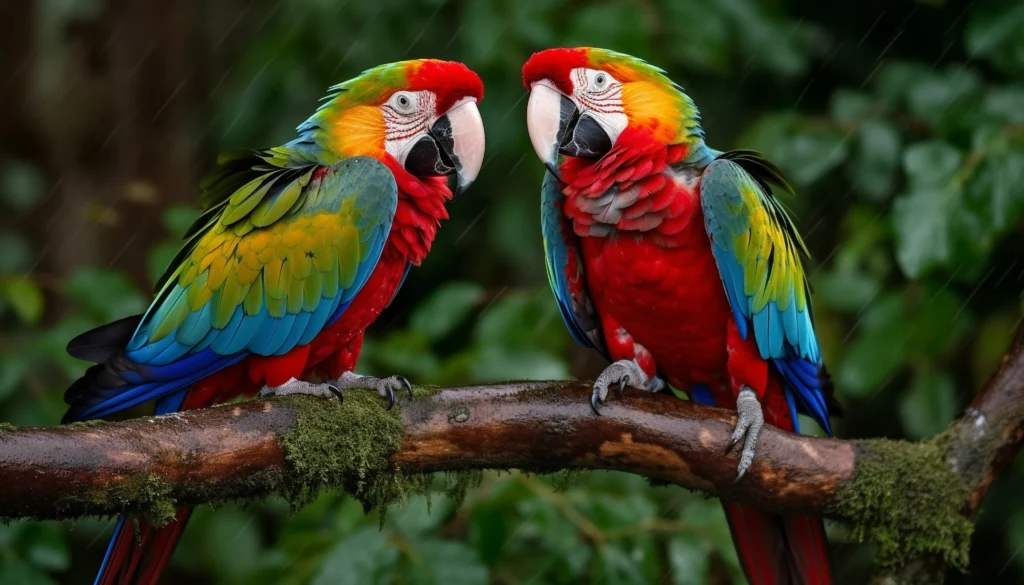
Understanding the Hahn’s Macaw
Before diving into common ownership mistakes, let’s understand what makes the Hahn’s Macaw unique among pet birds.
Hahn’s Macaw Characteristics and Species Information
The Hahn’s Macaw (Diopsittaca nobilis hahnii) is a subspecies of the Noble Macaw, belonging to the mini-macaw category. Despite their smaller size compared to their larger cousins like the Scarlet or Blue and Gold Macaws, Hahn’s Macaws possess the same vibrant personality and intelligence that macaws are known for.
These birds are native to the northern regions of South America, particularly Venezuela, Brazil, and the Guianas. In the wild, Hahn’s Macaws typically inhabit forest edges and wooded areas, forming small flocks that forage together for fruits, nuts, seeds, and vegetation.
Physically, the Hahn’s Macaw sports predominantly green plumage with a bright red accent on the leading edge of their wings. They have the characteristic bare facial patch around their eyes that all macaws share, though it’s less prominent than in larger species. Their beak is black, powerful, and designed for cracking tough nuts and seeds.
Adult Hahn’s Macaws typically measure 12-14 inches in length from beak to tail, making them significantly smaller than their larger macaw relatives, which can reach over 30 inches. Their smaller size contributes to their popularity as pets, especially for those who don’t have space for a larger macaw species.
Hahn’s Macaw Lifespan
One crucial aspect prospective owners often overlook is the Hahn’s Macaw lifespan. These birds are long-lived companions, with a typical lifespan of 25-30 years in captivity when properly cared for. Some may even live longer, with reports of individuals reaching 40+ years. This impressive longevity means that bringing a Hahn’s Macaw into your home is a decades-long commitment – something to consider carefully before purchasing.
Hahn’s Macaw Personality and Temperament
The Hahn’s Macaw personality is often described as playful, affectionate, and intelligent. These birds form strong bonds with their owners and can be incredibly devoted companions. They’re known for their clownish antics and ability to learn tricks and commands, making them engaging pets for those willing to invest time in their mental stimulation.
The Hahn’s Macaw temperament tends to be more manageable than that of larger macaws. They’re generally less prone to the loud screaming sessions that larger macaws are notorious for, though they can certainly be vocal when they want attention or are excited. Their more moderate noise level makes them better suited to apartment living compared to their larger cousins, though neighbors should still be considered.
These birds are social creatures that crave interaction and can become depressed or develop behavioral problems if left alone for extended periods. Their intelligence is both a blessing and a challenge – while they can learn tricks and vocabulary, they also require consistent mental stimulation to prevent boredom and destructive behaviors.
Now that we have a better understanding of the Hahn’s Macaw species, let’s explore the common mistakes many owners make and how to avoid them for a harmonious relationship with your feathered friend.
Mistake #1: Improper Diet and Nutrition
Perhaps the most critical mistake Hahn’s Macaw owners make is providing an inadequate diet. Many new owners don’t realize that a proper Hahn’s Macaw diet significantly impacts their bird’s health, lifespan, behavior, and overall well-being.
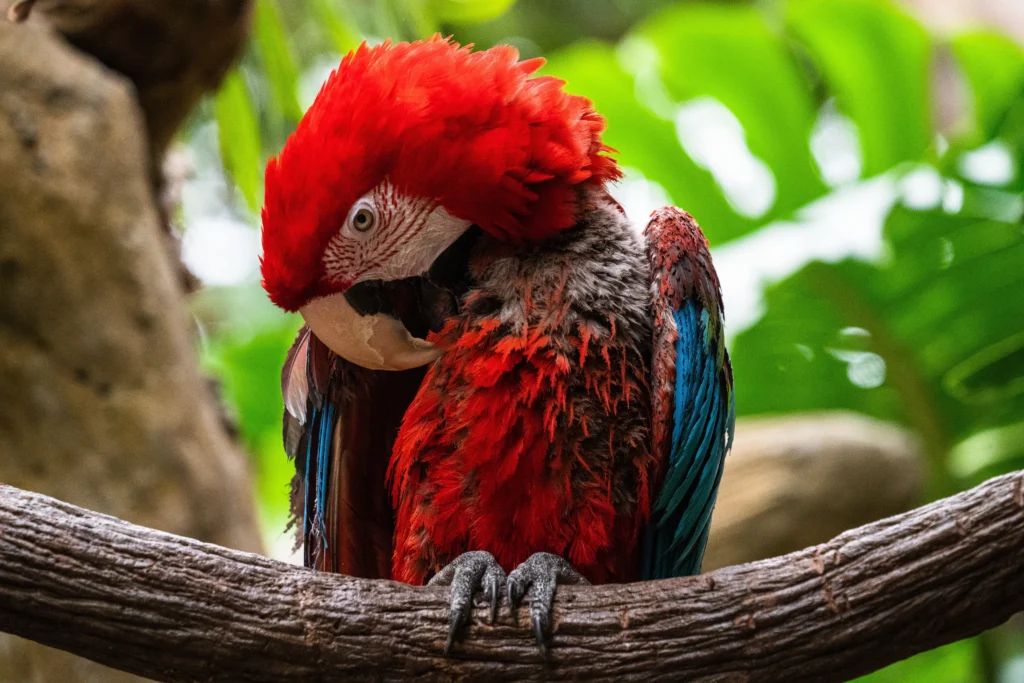
The Seed-Only Diet Myth
One of the biggest nutritional errors is relying solely on seeds for your Hahn’s Macaw’s diet. While seeds are calorie-dense and appealing to birds, they lack essential nutrients and contain excessive fat. A seed-only diet commonly leads to:
- Vitamin A deficiency
- Calcium deficiency
- Fatty liver disease
- Obesity
- Shortened lifespan
- Dull, unhealthy plumage
- Compromised immune system
Seeds should only constitute about 10-15% of your Hahn’s Macaw’s diet, primarily used as training treats or occasional supplements.
The Ideal Hahn’s Macaw Diet
A properly balanced Hahn’s Macaw diet should include:
- High-Quality Pellets (60-70%): Formulated pellets should form the foundation of your bird’s diet. Choose a high-quality brand specifically designed for small to medium parrots or macaws. Pellets provide balanced nutrition with appropriate levels of vitamins and minerals.
- Fresh Vegetables (15-20%): Offer a variety of vegetables daily, including leafy greens (kale, spinach, collard greens), carrots, bell peppers, broccoli, and sweet potatoes. These provide essential vitamins, minerals, and antioxidants vital for your Hahn’s Macaw’s health.
- Fresh Fruits (10-15%): Fruits should be offered in moderation due to their sugar content. Good options include berries, apples, papaya, mango, and banana. Remove all seeds from fruits like apples, as some can be toxic.
- Healthy Proteins (5-10%): Occasional cooked egg, small amounts of cooked chicken, legumes, or nuts can provide necessary protein. Nuts should be limited due to their high fat content, though they make excellent training rewards.
- Foraging Opportunities: In the wild, Hahn’s Macaws spend much of their day foraging for food. Replicate this natural behavior by providing puzzle toys, foraging boxes, or hiding food in toys to encourage mental stimulation and physical activity.
Foods to Avoid
Certain foods are toxic to Hahn’s Macaws and should never be offered:
- Avocado
- Chocolate
- Caffeine
- Alcohol
- Onions and garlic
- Apple seeds and fruit pits
- Salty foods
- High-sugar foods
Hydration
Always provide fresh, clean water daily. Some Hahn’s Macaws enjoy bathing in their water dishes, so separate drinking water from bathing opportunities. Regular misting or shallow bath dishes can help maintain healthy feathers and skin.
By avoiding the common mistake of nutritional neglect and implementing a balanced, varied diet, you’ll set the foundation for your Hahn’s Macaw’s long-term health and vitality.
Mistake #2: Inadequate Housing and Environment
Another frequent mistake Hahn’s Macaw owners make is providing insufficient or inappropriate housing. Despite being smaller than their larger macaw relatives, Hahn’s Macaws still require substantial space and proper environmental setup to thrive.
Cage Size Matters
One of the most common housing errors is selecting a cage that’s too small. The minimum Hahn’s Macaw cage size should be at least 24″ W × 24″ D × 36″ H, though larger is always better. Ideally, look for cages with these features:
- Bar spacing between 5/8″ to 3/4″ (to prevent escape or injury)
- Horizontal bars on at least two sides (to facilitate climbing)
- Solid construction with non-toxic materials (powder-coated or stainless steel)
- Secure latches that can’t be opened by clever beaks
- Removable tray for easy cleaning
- Space for multiple perches, toys, and food/water dishes
Remember that the cage is your Hahn’s Macaw’s primary living space when they can’t be supervised outside the cage. Providing adequate room to climb, flap wings, and play is essential for physical and psychological well-being.
Cage Placement
The location of your Hahn’s Macaw’s cage within your home is equally important:
- Position in a family room or area with frequent activity (they’re social and want to be part of the action)
- Away from drafts, direct sunlight, and temperature extremes
- Not in the kitchen (cooking fumes can be toxic)
- Not in bedrooms (your Hahn’s Macaw may keep you awake or vice versa)
- Away from other potentially incompatible pets
Proper Perches
Another housing mistake is providing only smooth, uniform dowel perches. In the wild, Hahn’s Macaws perch on branches of various diameters and textures, which helps maintain foot health and prevents issues like pressure sores and arthritis.
Your Hahn’s Macaw’s cage should include:
- Natural wood perches of varying diameters (1/2″ to 1″)
- Textured perches that help wear down nails naturally
- Soft rope perches for comfort (monitor for fraying threads)
- Strategic placement that doesn’t contaminate food or water
- Enough space between perches for flight feathers to remain undamaged
Essential Environmental Enrichment
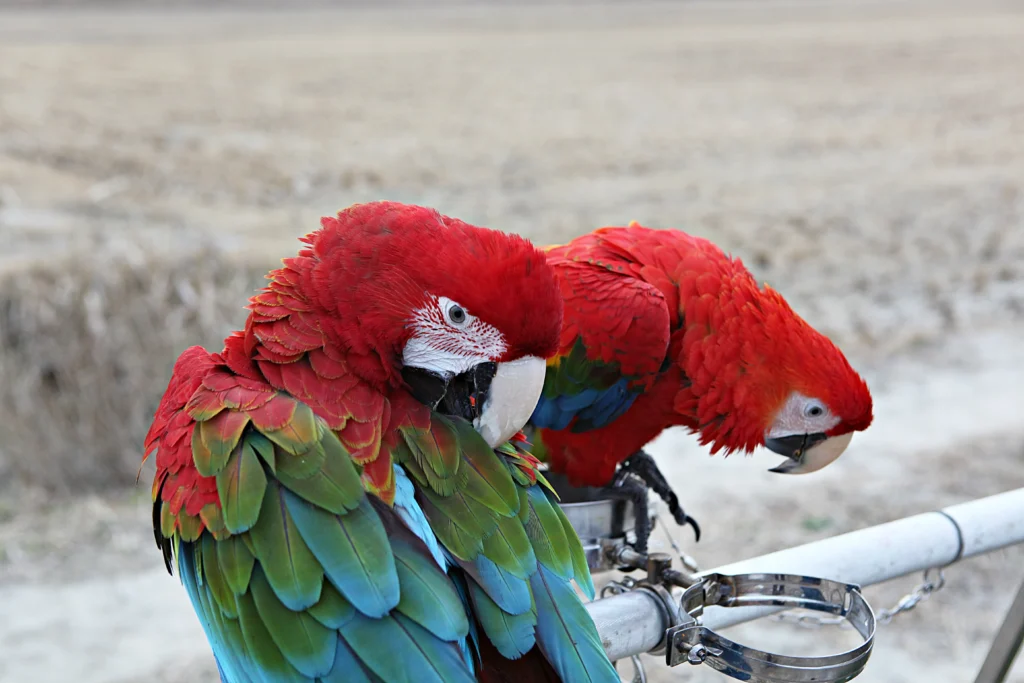
Many Hahn’s Macaw owners underestimate their bird’s need for mental stimulation. As highly intelligent creatures, these birds require environmental enrichment to prevent boredom and destructive behaviors.
Provide plenty of appropriate Hahn’s Macaw toys that offer different types of engagement:
- Foraging toys: Hide treats within puzzles to satisfy natural foraging instincts
- Chewing/destroying toys: Made of natural woods, untreated leather, paper, or cardboard
- Manipulative toys: With parts that move, swing, or can be taken apart and reassembled
- Comfort toys: Soft materials for preening or cuddling (monitor for ingestion)
- Noise-making toys: Bells, rattles, or other sound-producing elements (use sparingly if noise is a concern)
Rotate toys regularly to maintain interest, and replace damaged toys promptly to prevent injury.
Out-of-Cage Time and Safety
Hahn’s Macaws need daily out-of-cage time to exercise, explore, and bond with their human companions. However, many owners fail to properly bird-proof their homes, leading to accidents or injuries.
Essential safety measures include:
- Securing ceiling fans, blinds, and curtain cords
- Covering windows to prevent collision
- Removing toxic houseplants
- Securing toilet lids and water sources
- Eliminating access to electrical cords
- Removing small objects that could be swallowed
- Being aware of non-stick cookware fumes (Teflon)
- Ensuring other pets are secured separately during free time
By avoiding these common housing mistakes and creating an environment that addresses the physical and mental needs of your Hahn’s Macaw, you’ll provide a foundation for a healthy, happy bird.
Mistake #3: Neglecting Socialization and Training
Many Hahn’s Macaw owners underestimate the importance of consistent socialization and training. These highly intelligent birds require regular interaction and mental stimulation to develop into well-adjusted companions.
The Social Nature of Hahn’s Macaws
In the wild, Hahn’s Macaws are social creatures that live in small flocks, constantly interacting with other birds. When kept as pets, you and your family become their flock. Neglecting their need for social interaction can lead to behavioral issues such as:
- Excessive screaming
- Feather picking
- Self-mutilation
- Aggression
- Depression
- Stereotypic behaviors (repetitive, seemingly purposeless movements)
Consistent Handling and Bonding
A common mistake is inconsistent handling, which can confuse your Hahn’s Macaw and damage trust. Establishing and maintaining a bond requires:
- Daily interaction, even on busy days
- Gentle, patient handling techniques
- Respecting body language that indicates stress or discomfort
- Regular positive reinforcement
- Maintaining boundaries consistently
Hahn’s Macaw Training Tips
Another oversight is neglecting basic training, which is essential for both safety and a harmonious relationship. Effective Hahn’s Macaw training tips include:
- Step-Up Training: Teaching your bird to step onto your hand or a perch on command is fundamental. Use consistent verbal cues like “step up” and positive reinforcement.
- Target Training: Training your Hahn’s Macaw to touch a specific object (like a chopstick with a colored tip) can be the foundation for more complex behaviors.
- Recall Training: Teaching your bird to come when called can be potentially life-saving if they accidentally escape.
- Crate/Cage Training: Your Hahn’s Macaw should enter their cage willingly when asked, making daily management easier.
- Handling Tolerance: Gradually acclimate your bird to being touched on different body parts, which facilitates health checks and potential veterinary care.
All training should use positive reinforcement – never punishment or negative reinforcement, which can damage trust and escalate fear-based behaviors.
Hahn’s Macaw Talking Ability
Many owners have unrealistic expectations regarding their Hahn’s Macaw talking ability. While these birds can develop impressive vocabularies (typically 20-40 words and phrases), individual aptitude varies:
- Begin talking training around 3-6 months of age
- Repeat words and phrases consistently
- Use excited, enthusiastic tones
- Reward verbal attempts
- Be patient – some birds take longer to speak than others
- Some individuals may never talk extensively, regardless of training
Remember that talking ability doesn’t indicate intelligence or quality as a companion. Some of the smartest, most engaging Hahn’s Macaws may prefer to communicate in other ways.
Addressing Behavioral Issues
Ignoring early signs of behavioral problems is a significant mistake. Hahn’s Macaw behavior should be monitored and addressed promptly:
- Biting: Often results from fear, territorial defense, or previous negative experiences. Address the underlying cause rather than punishing the behavior.
- Screaming: Some vocalization is normal, but excessive screaming may indicate boredom, attention-seeking, or distress. Never reward screaming with attention.
- Feather Picking: Can stem from medical issues, nutritional deficiencies, stress, or boredom. Veterinary assessment is essential.
- Fearfulness: May result from inadequate socialization or negative experiences. Requires patient desensitization and counterconditioning.
By avoiding these socialization and training mistakes, you’ll help your Hahn’s Macaw develop into a well-adjusted, confident companion with whom you can share many happy years.
Mistake #4: Overlooking Health Maintenance and Veterinary Care
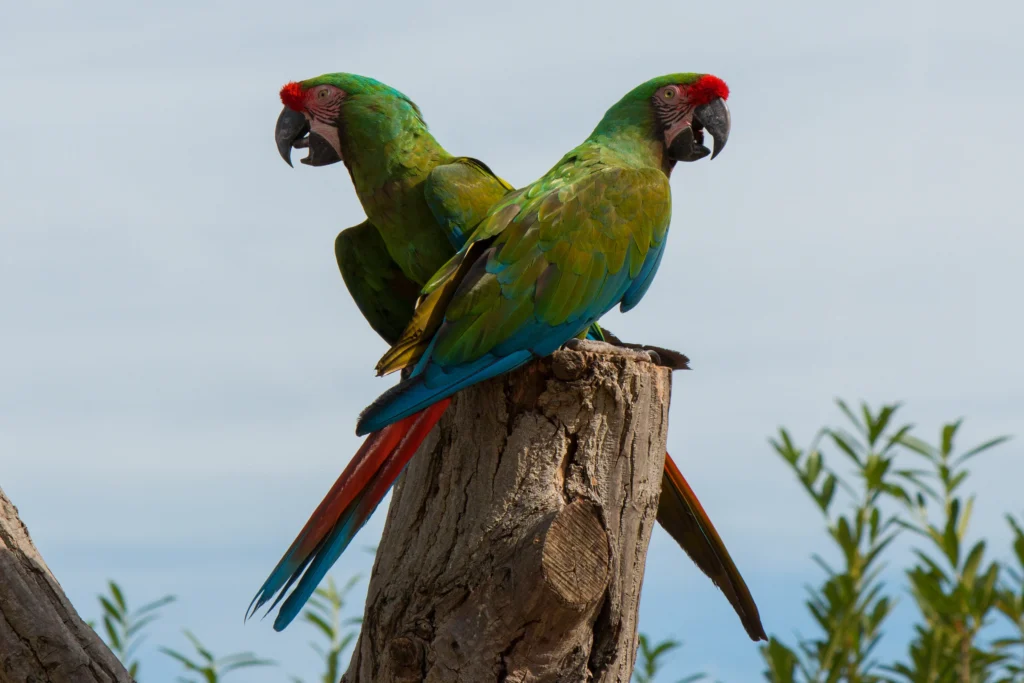
A critical error many Hahn’s Macaw owners make is neglecting preventative healthcare and regular veterinary attention. Proactive health management is essential for detecting and addressing Hahn’s Macaw health issues before they become serious or life-threatening.
Finding an Avian Veterinarian
Many new owners make the mistake of waiting until their bird is sick before locating an avian veterinarian. Birds are masters at hiding illness—an evolutionary adaptation to avoid predation in the wild. By the time symptoms are obvious, a condition may be advanced and more difficult to treat.
Establish a relationship with an avian veterinarian (not just a general veterinarian who occasionally sees birds) before bringing your Hahn’s Macaw home. Schedule:
- An initial health exam within 48 hours of acquiring your bird
- Annual wellness exams for young, healthy birds
- Bi-annual check-ups for birds over 10 years old
Common Hahn’s Macaw Health Issues
Being aware of potential health concerns can help you identify problems early:
- Respiratory Infections: Watch for tail bobbing, wheezing, nasal discharge, or labored breathing.
- Psittacosis (Chlamydiosis): A bacterial infection that can be transmitted to humans. Symptoms include lethargy, lime-green droppings, and respiratory issues.
- Nutritional Deficiencies: Often manifested as poor feather quality, weakened immune system, or reproductive problems.
- Fatty Liver Disease: Common in birds fed high-fat diets, symptoms include obesity, black spots on the beak, and abnormal feathering.
- Psittacine Beak and Feather Disease (PBFD): A viral condition causing feather loss and beak abnormalities.
- Parasites: Both internal and external parasites can affect Hahn’s Macaws, causing various symptoms from lethargy to feather damage.
- Egg Binding: Female birds may experience difficulty laying eggs, a potentially fatal condition requiring immediate veterinary attention.
Essential Health Monitoring
Develop the habit of regularly observing your Hahn’s Macaw for signs of health or illness:
- Weight: Purchase a gram scale and weigh your bird weekly. Subtle weight loss can be the first indicator of health problems.
- Droppings: Become familiar with normal droppings (appearance, consistency, color) to recognize changes that might indicate illness.
- Behavior: Note your bird’s typical activity level, appetite, vocalizations, and interaction style so you can identify deviations.
- Physical Appearance: Regularly examine feathers, skin, beak, nails, eyes, and nostrils for abnormalities.
Emergency Preparedness
Another oversight is failing to prepare for potential emergencies:
- Keep your avian veterinarian’s contact information readily available
- Know the location and hours of the nearest emergency exotic animal hospital
- Have a travel carrier always ready for urgent trips
- Maintain a small “first aid kit” with items like styptic powder (for minor bleeding) and towels for safely restraining an injured bird
- Save money specifically for emergency veterinary care, which can be costly
Wing Trimming Considerations
The debate around wing trimming deserves careful consideration. While many owners automatically trim their Hahn’s Macaw flight feathers, this practice has both benefits and drawbacks:
Potential Benefits of Wing Trimming:
- Reduced risk of escape or injury from flying into windows/fans
- Easier handling for novice owners
- May facilitate training during early bonding periods
Potential Drawbacks:
- Limits natural exercise and behavior
- Can affect balance and confidence
- May increase dependence and potentially contribute to behavioral issues
- Requires regular maintenance as feathers regrow
If you choose to trim your Hahn’s Macaw’s flight feathers, have this done by an experienced avian veterinarian or professional bird groomer, never attempt this yourself without proper training.
By avoiding these healthcare mistakes and maintaining proactive health management, you’ll give your Hahn’s Macaw the best chance at a long, healthy life as your companion.
Mistake #5: Unrealistic Expectations and Commitment Issues
Perhaps the most fundamental mistake potential Hahn’s Macaw owners make is having unrealistic expectations about what life with these birds entails. This misalignment between expectation and reality often leads to rehomed birds, stressed owners, and unhappy companions.
Understanding the Financial Commitment
The initial Hahn’s Macaw price is just the beginning of your financial investment. Many prospective owners focus solely on the purchase cost without considering ongoing expenses.
Initial costs typically include:
- Hahn’s Macaw purchase: $1,000-$2,500 from reputable breeders
- Quality cage: $300-$800
- Initial supplies (perches, toys, food bowls): $200-$400
- Initial veterinary exam: $75-$200
Ongoing annual expenses:
- Quality pelleted food: $150-$300
- Fresh produce: $300-$600
- Toys (regularly replaced): $300-$600
- Annual veterinary care: $200-$500
- Emergency fund: Recommend minimum $1,000 set aside
Particularly concerning is when owners looking for a Hahn’s Macaw for sale choose birds based primarily on price, potentially supporting unethical breeding practices or ending up with an unhealthy bird requiring extensive veterinary care.
Time Commitment Reality
Another unrealistic expectation concerns the time required for proper Hahn’s Macaw care:
- Daily interaction: Minimum 2-3 hours of direct attention and socialization
- Cage cleaning: 15-30 minutes daily, with deeper cleanings weekly
- Food preparation: 15-30 minutes daily for fresh foods
- Training sessions: 10-15 minutes, multiple times daily
- Enrichment planning: Time spent researching and providing new toys and experiences
These birds are not low-maintenance pets that can be ignored when you’re busy or on vacation. They require consistent, dedicated attention throughout their decades-long lives.
Noise and Mess Expectations
Hahn’s Macaw noise level is another area where expectations often don’t align with reality:
- Morning and evening calls: Loud vocalizations during dawn and dusk are natural behaviors
- Contact calls: Regular calls to locate “flock members” throughout the day
- Excited vocalizations: Enthusiastic noise during play or when excited
- Attention-seeking screams: May develop if social needs aren’t met
While Hahn’s Macaws are generally quieter than larger macaw species, they are still parrots and will make significant noise. Apartments with thin walls or intolerant neighbors may not be suitable environments.
Similarly, these birds are naturally messy:
- Food is often flung beyond cage boundaries
- Feather dust accumulates on surrounding surfaces
- Toys are actively destroyed, creating debris
- Droppings may be projected outside the cage
- Paper, wood chips, and bedding may be scattered
Family and Lifestyle Compatibility
A critical mistake is failing to consider how a Hahn’s Macaw fits into your overall lifestyle:
- Longevity: With a Hahn’s Macaw lifespan of 25-30+ years, will your living situation remain suitable?
- Family changes: How will marriage, children, or relocation affect your bird?
- Other pets: How will existing pets interact with your macaw, and vice versa?
- Travel: Who will care for your bird during vacations or emergencies?
- Allergies: Have all household members been tested for allergies to feather dander?
- Future housing: Will potential living arrangements accommodate a vocal bird?
Hahn’s Macaw vs. Green Cheek Conure Comparison
Many potential owners debate between a Hahn’s Macaw vs Green Cheek Conure, often not fully understanding the differences:
| Characteristic | Hahn’s Macaw | Green Cheek Conure |
|---|---|---|
| Size | 12-14 inches | 9-10 inches |
| Lifespan | 25-30+ years | 15-20 years |
| Noise Level | Moderate to loud | Less vocal, quieter |
| Space Requirements | Larger cage needed | More compact housing possible |
| Intelligence | Higher problem-solving | Playful but less complex |
| Price | $1,000-$2,500 | $350-$800 |
| Personality | Independent yet affectionate | Often more cuddly |
| Talking Ability | Better vocabulary potential | Limited speech capabilities |
While Green Cheek Conures may be more suitable for apartment living or first-time bird owners, neither species should be chosen without thorough research and realistic expectations.
By avoiding these expectation misalignments and making a fully informed decision about Hahn’s Macaw ownership, you’ll set yourself and your bird up for a successful, rewarding relationship.
Conclusion: Creating a Thriving Environment for Your Hahn’s Macaw
Bringing a Hahn’s Macaw into your home is a significant commitment that can yield decades of companionship, entertainment, and mutual bonding. By avoiding the five critical mistakes we’ve discussed—improper diet, inadequate housing, neglected socialization, overlooked healthcare, and unrealistic expectations—you’ll create an environment where both you and your feathered friend can thrive.
Remember that Hahn’s Macaws as pets require a holistic approach to care that addresses their physical, psychological, and social needs. These intelligent, sensitive creatures depend entirely on their human companions to provide appropriate nutrition, enrichment, medical attention, and love throughout their long lives.
If you’re prepared to make this commitment, a Hahn’s Macaw can be an extraordinarily rewarding companion animal. Their playful antics, cognitive abilities, and capacity for affection make them wonderful pets for the right owner.
For those considering a Hahn’s Macaw or already sharing their home with one of these charismatic birds, we encourage continued education through reputable avian organizations, networking with experienced owners, and building a relationship with knowledgeable avian professionals who can guide you through the journey of Hahn’s Macaw ownership.
With proper care and attention to avoiding common mistakes, your Hahn’s Macaw can live a long, healthy, and happy life as a beloved member of your family.
Additional Resources
For more information on proper Hahn’s Macaw care and avian health, consider exploring these trusted resources:
- Association of Avian Veterinarians – Find certified avian veterinarians in your area
- Avian Welfare Coalition – Educational resources on proper bird care
- BirdTricks – Training resources and nutritional information
- World Parrot Trust – Conservation and education about parrots globally
- Bird Health Topics – More information on keeping your bird healthy
Explore more articles about bird care on our website:
- Essential Bird Nutrition Guide
- Choosing the Right Bird Species for Your Home
- Bird Training Fundamentals
- Setting Up the Perfect Aviary
- Common Parrot Health Issues and Prevention
This article about Hahn’s Macaw care and common ownership mistakes was last updated on April 30, 2025.



